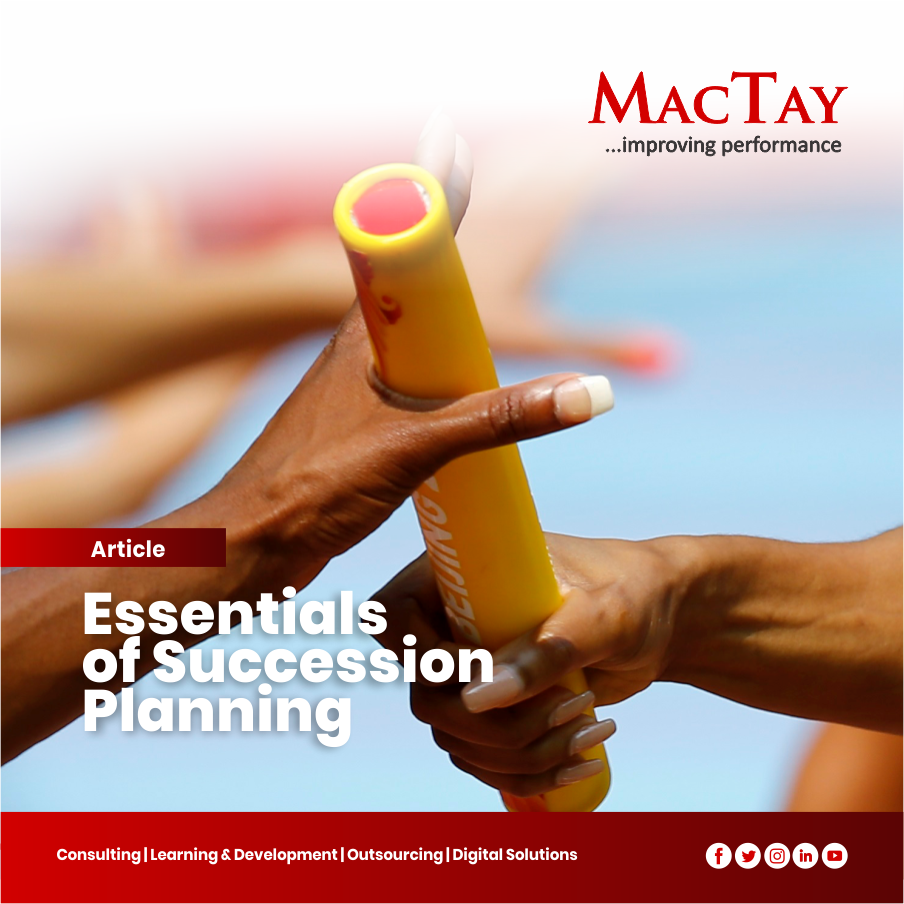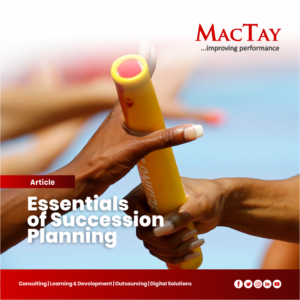
Essentials of Succession Planning
 Succession planning is of strategic priority in the Human Resources agenda.. One activity with more impact than succession planning and talent pool management is replacement planning, which occurs as part of succession planning conversations. A replacement plan identifies “substitutes” for positions in order not to create a lacuna whenever someone resigns. Creating a keyman risk may make a mess of any smooth-running organisation.
Succession planning is of strategic priority in the Human Resources agenda.. One activity with more impact than succession planning and talent pool management is replacement planning, which occurs as part of succession planning conversations. A replacement plan identifies “substitutes” for positions in order not to create a lacuna whenever someone resigns. Creating a keyman risk may make a mess of any smooth-running organisation.
Succession planning identifies individuals who can assume roles in the future and assesses how equipped they are for that role. Identifying individuals not only earmarked but trained and developed to fit into particular roles is an excellent step for any business to take. The unpredictability of life guarantees no certainties, and this applies to the workplace therefore planning for such eventualities is a necessity.
Succession planning takes time and dedication. It should be an intentional process and should be considered as a key part of business strategy. To have an effective succession plan, organisations should consider the steps shown below:
Identify key positions: While every job is important, certain roles within the organisation are critical and are capable of significantly affecting the business if left vacant for a long period. Identifying these key positions is a great place to start.
Identify the critical skills for each position: List the competencies and qualities anyone holding these positions must have. If an individual already possesses the basic skills, he or she should acquire the additional skills or knowledge required for the position.
Assess the skills of current employees: A skill gap analysis is necessary to determine the current competency strength of the organisation to ensure that all staff regardless of whether they have been identified to fit particular roles do not possess a skill deficit and can be upskilled as need arises.
Match the critical skills to the current skills of employees: It tempts many organisations to think that backup employees only exist within the particular department. For instance, thinking the accounting manager is the obvious backup for the Accounting Director. The organisation needs to ensure that they keep the planning activity focused on skills and not current job titles.
Pay attention to jobs that do not have matches: Some jobs need special attention and consideration. These are jobs where there is no immediate replacement. In this case, it is advisable to maintain a pool of external candidates available to close gaps as they arise.
Develop a plan to address gaps: The plan will include development programmes such as training, mentoring, coaching, and contingent staffing, or a combination of all these programmes. With replacement planning, the organisation does not have to identify a single replacement. They must use talent pools to develop transferable skills for many positions.
Evaluate the plan: Organisations should test the plan regularly to ensure relevance and suitability.. For key positions, the individuals occupying those roles can be tasked with identifying their replacements and training them. This goal could become part of their performance review.
Succession plan provides the organisation with the comfort that a last-minute resignation, retirement, or employee illness will not leave the company stranded. It gives the organisation a sense of the investment against the Keyman risk that may arise in its future. Regular replacement planning activities make the organisation keenly aware of the support employees need to be successful.










